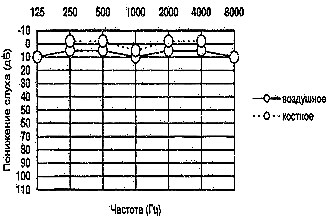Nasopharyngitis is a respiratory disease in which the mucous membranes of the nasal passages and larynx are affected at the same time. As a rule, it develops in 4 out of 5 cases with acute respiratory infections or acute respiratory viral infections and is quite easily cured even at home. But if the disease is started or the body has favorable conditions for its development, then it can quickly turn into a chronic form. And to cure chronic rhinopharyngitis is much more difficult than the acute phase of the disease.
Main reasons
 In 90% of all cases, pathogens become pathogens. Most often these are viruses or bacteria that enter the nasopharynx by airborne droplets. With ARVI, an acute form of rhinopharyngitis occurs in almost everyone. In this case, the disease goes into a chronic form only in the absence of treatment.
In 90% of all cases, pathogens become pathogens. Most often these are viruses or bacteria that enter the nasopharynx by airborne droplets. With ARVI, an acute form of rhinopharyngitis occurs in almost everyone. In this case, the disease goes into a chronic form only in the absence of treatment.
Chronic nasopharyngitis is caused by:
- pathogens that can be in the body for a long time: chlamydia, streptococci, meningococci, staphylococci, etc.;
- bad habits: smoking, inhalation of drugs, alcoholism;
- constant exposure to chemical or physical irritants;
- frequent or prolonged allergic reactions;
- chronic respiratory diseases;
- weakened immune defense of the body;
- the presence of foci of infection in nearby organs: caries, pulpitis, otitis media;
- individual features of the anatomy of the nose;
- previous injuries or operations on the nose;
- some diseases of the internal organs.
While the body is in a satisfactory condition, clinical manifestations of chronic nasopharyngitis may not be observed. But as soon as one or more factors that can trigger the disease affect him: hypothermia, colds, acute respiratory infections, a drop in immunity, prolonged lack of sleep, severe stress, etc., he will immediately give all the characteristic symptoms.
Rhinopharyngitis symptoms
In the stage of exacerbation of chronic rhinopharyngitis, the symptoms of the disease are the same as in the acute form:
 unpleasant tickling sensations in the nose;
unpleasant tickling sensations in the nose;- persistent sore throat;
- difficulty swallowing, sometimes painful;
- accumulation of lumps of thick mucus in the throat;
- the formation of dense crusts on the mucous membrane of the throat;
- profuse clear coryza in the morning;
- bad breath and nose;
- the presence of lumps of pus in saliva;
- redness and swelling of the mucous membrane of the eyes;
- dryness of the mucous throat.
A strong increase in body temperature in adults with chronic rhinopharyngitis does not occur, only in children during an exacerbation it can rise to 38 degrees. In the subacute stage, the symptoms listed above practically disappear, but this is not a reason to refuse treatment.
Possible complications
Although the disease, even in an acute form, is tolerated quite easily, and in a chronic one it only causes certain inconveniences, it cannot be left unattended. With prolonged irritation and inflammation, irreversible changes begin to occur in the structure of the mucous membranes of the respiratory system, which can lead to cell degeneration.
 In addition, the presence of a permanent focus of infection will sooner or later lead to damage to other internal organs. Possible complications from chronic rhinopharyngitis include:
In addition, the presence of a permanent focus of infection will sooner or later lead to damage to other internal organs. Possible complications from chronic rhinopharyngitis include:
- acute or chronic otitis media;
- quinsy;
- purulent bronchitis;
- acute tracheitis;
- pneumonia;
- infectious meningitis;
- chronic sinusitis;
- false croup in children.
In addition, it can provoke an increase in the frequency of bronchial asthma attacks, as well as asthma attacks with pulmonary emphysema.
If, due to prolonged persistent inflammation, pathological changes in the mucous membranes occur, then hypertrophic or atrophic rhinopharyngitis can be diagnosed. Both of these diseases are dangerous in that they can lead to the appearance of neoplasms.
- In hypertrophic rhinopharyngitis, the lining of the larynx and nose swells and thickens greatly, which interferes with normal breathing and reduces the flow of oxygen to cells and tissues. Active proliferation of mucosal cells may begin with the formation of polyps, an increase in the lateral ridges of the larynx.
- The main symptom of atrophic rhinopharyngitis is severe thinning and constant drying out of the mucous membranes, through which the capillary network begins to be clearly visible. With severe irritation or coughing, the capillaries burst, and persistent nosebleeds occur.
Diagnosis of the disease
The easiest way to identify rhinopharyngitis in the acute stage, since during this period, the clinical symptoms appear most clearly. It is possible to suspect a chronic form of the disease if, after an exacerbation, remain: a runny nose in the morning, a sore throat, periodically appearing lumps of thick mucus, subfebrile body temperature.
 To identify the disease, it is necessary to undergo a diagnostic examination and it is worth starting with a visit to the otolaryngologist. He will perform a thorough examination of the nasal cavity and throat, feel the cervical lymph nodes and prescribe the necessary tests and tests:
To identify the disease, it is necessary to undergo a diagnostic examination and it is worth starting with a visit to the otolaryngologist. He will perform a thorough examination of the nasal cavity and throat, feel the cervical lymph nodes and prescribe the necessary tests and tests:
- a general blood test to see if there are active inflammatory processes in the body;
- bacterial seeding of mucus from the nose and throat to identify which microorganisms have caused pathological processes;
- endoscopy of the nose, which allows you to examine and assess the condition of the mucous membranes from the inside;
- X-ray of the nose and sinuses to make sure that there are no complications or sinus inflammation.
You may need additional consultations from specialists: a therapist or pediatrician, pulmonologist, allergist.
It is very important as a result of the examination to identify the main cause of the disease. After all, if you do not eliminate what contributes to the maintenance of the chronic form of rhinopharyngitis, then even a completely correctly selected treatment will not give a long-term result - the disease will come back again and again.
Drug treatment
How and how to treat rhinopharyngitis is decided by the attending physician, based on the data obtained during the examination. Treatment should be directed at first addressing the underlying cause of the disease and only then at relieving symptoms. So, with the allergic nature of chronic rhinopharyngitis, it is enough to choose the right antihistamines and exclude the effect of the allergen, as the problem will be resolved by itself.
In the case of an infectious nature of the disease, it is necessary to select antibacterial drugs that will turn out to be detrimental to the microorganisms that provoked the inflammatory process. This is usually done during bacterial inoculation, when bacteria are simultaneously susceptible to different types of drugs.
Self-administration of antibiotics can further weaken the immune system and only worsen the situation.
 The course of drug treatment for chronic rhinopharyngitis may include the following groups of drugs:
The course of drug treatment for chronic rhinopharyngitis may include the following groups of drugs:
- antibiotics or antiviral - depending on what exactly caused the disease (prescribed strictly individually);
- antihistamines - for the allergic nature of the disease and to relieve severe mucosal edema: Tavegil, Claritin, Loratadin, etc .;
- antipyretic - only in case of a strong increase in temperature and until it falls: "Ibuprofen", "Paracetamol", "Nurofen", etc.;
- for throat treatment - anti-inflammatory and antiseptic solutions: Lugol, chlorophyllipt, chlorhexidine, propolis tincture;
- oil drops in the nose - to protect, moisturize and restore the mucous membrane: sea buckthorn or olive oil, oily solution of chlorophyllipt, "Pinosol";
- antitussive - to reduce irritation of the throat mucosa with an unproductive cough: "Sinekod", "Erespal", etc.;
- expectorants - after softening the cough, to liquefy and improve the discharge of mucus: "Bromhexin", "Ambroxol", "Ambrobene", etc.
Several times a day it is necessary to rinse the nose and rinse the throat with a solution of sea salt or ready-made pharmaceutical preparations "Dolphin", "Aquamaris", etc.
Twice a day - in the afternoon and in the evening - it is useful to do soda or saline inhalations, which moisturize the mucous membranes well and contribute to their early recovery.
If it is possible to regularly visit the clinic, a course of physiotherapy procedures will significantly speed up the healing process. This can be a quartz tube, electrophoresis, UHF or darsonvalization. The minimum course is 7-10 procedures performed daily. It is very important that after physiotherapy the patient is at rest for at least 15-20 minutes - this is how the effectiveness of the procedure increases significantly.
Folk remedies
Treatment of the chronic form of nasopharyngitis with folk remedies is not as effective as with modern medicines. This is primarily due to the fact that most often it has an infectious nature, and most plants do not have strong antibacterial properties.
 In addition, the course of treatment with folk remedies is at least 14 days, which is not always convenient for adults, for whom it is important to "return to duty" as soon as possible.
In addition, the course of treatment with folk remedies is at least 14 days, which is not always convenient for adults, for whom it is important to "return to duty" as soon as possible.
Alternative methods of treatment can be recommended as an adjuvant, which, if used correctly, will accelerate the healing and recovery process of the affected areas of the mucous membranes. In this capacity, it is useful to apply:
- Beet juice. For children, it must be diluted in half with water. Dripping 3-5 drops into each nostril 4-5 times a day. Can be used for applications: soak a gauze turunda with juice and insert into the nose for 15-20 minutes.
- Tincture of calendula alcohol. Diluted in half with water is useful for rinsing the nose as an antiseptic and anti-inflammatory agent. For homemade tincture, take 2 tablespoons. dry flowers and pour a glass of vodka (you no longer need to dilute the vodka tincture with water), put in a dark place and shake daily.
- Propolis with honey. Dilute the alcoholic propolis tincture in half with water and add a little high-quality honey. This solution can be used to rinse the nose or gargle.
- Plantain syrup. Mash half a glass of fresh plantain leaves, cover with a glass of sugar and simmer until the syrup turns golden. Strain and take a teaspoon 3-4 times a day.
- Coniferous inhalation. They give an excellent anti-inflammatory, antiseptic and expectorant effect. Boil young pine shoots over low heat for 5-10 minutes, and then breathe over the steam. The child, in the absence of temperature, can be bathed at night in such a decoction - there will be simultaneous heating and inhalation.
But it is important to remember that if treatment with folk remedies does not give tangible results for 3-5 days, then it is necessary to stop experiments and seek qualified medical help.
Preventive measures
Although even the chronic form of rhinopharyngitis responds well enough to treatment, it is better not to start the disease and take measures so that it visits you as little as possible. It's not difficult, just enough:
- give up bad habits, primarily smoking (including passive and electronic cigarettes);
- improve immunity in every possible way: engage in physical education, practice hardening procedures, walk more and actively move;
 provide yourself with a normal sleep and rest regimen in order to exclude chronic overwork and lack of sleep;
provide yourself with a normal sleep and rest regimen in order to exclude chronic overwork and lack of sleep;- revise the diet and include in it as many quality foods as possible, rich in vitamins and minerals;
- timely and to the end to cure all respiratory diseases;
- in the presence of chronic diseases of internal organs, do everything possible to prevent their exacerbation;
- regularly, at least once a year, visit the dentist and carry out the sanitation of the oral cavity;
- monitor the temperature and the importance of air in work and sleeping areas;
- regularly carry out antifungal treatment of air conditioners, windows and sanitary facilities.
If you nevertheless notice regular recurring discomfort in your nose or throat, it is better to make an extra visit to the doctor and get some tests done. This will help to identify the disease at an early stage and prevent the development of serious complications.

 unpleasant tickling sensations in the nose;
unpleasant tickling sensations in the nose; provide yourself with a normal sleep and rest regimen in order to exclude chronic overwork and lack of sleep;
provide yourself with a normal sleep and rest regimen in order to exclude chronic overwork and lack of sleep;

